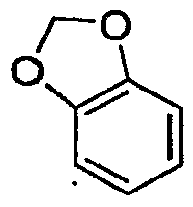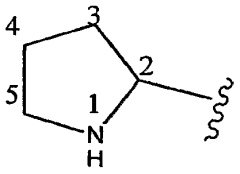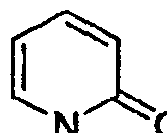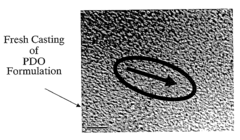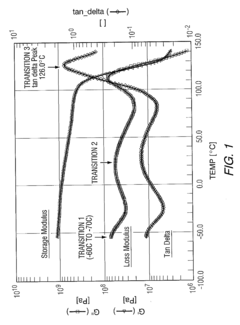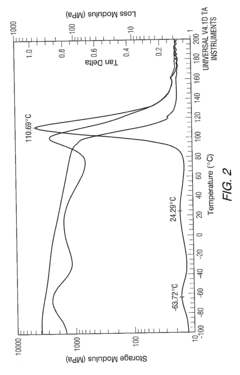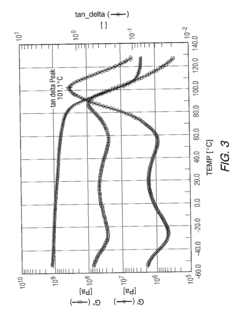Analyzing Polyurethane's Impact on Tomorrow's Tech
JUN 25, 20259 MIN READ
Generate Your Research Report Instantly with AI Agent
Patsnap Eureka helps you evaluate technical feasibility & market potential.
Polyurethane Evolution
Polyurethane, a versatile synthetic polymer, has undergone significant evolution since its discovery in the 1930s. Initially developed as a replacement for rubber, polyurethane has expanded its applications across various industries due to its unique properties and adaptability.
In the early stages of its development, polyurethane was primarily used in coatings and adhesives. The 1940s saw the introduction of rigid polyurethane foams, which revolutionized insulation in refrigeration and construction. This marked the beginning of polyurethane's journey into diverse industrial applications.
The 1950s and 1960s witnessed a surge in polyurethane research, leading to the development of flexible foams. This innovation opened up new possibilities in furniture, automotive, and bedding industries. Simultaneously, advancements in polyurethane chemistry enabled the creation of elastomers with enhanced durability and resistance to environmental factors.
The 1970s and 1980s brought about significant improvements in polyurethane processing techniques. The introduction of reaction injection molding (RIM) allowed for the production of large, complex parts with excellent surface finish, particularly benefiting the automotive industry. This period also saw the emergence of thermoplastic polyurethanes (TPUs), combining the elasticity of rubber with the processability of thermoplastics.
In the 1990s and 2000s, environmental concerns drove the development of more sustainable polyurethane formulations. Bio-based polyols derived from renewable resources began to replace petroleum-based raw materials. This shift towards eco-friendly alternatives continues to be a major focus in polyurethane research and development.
Recent years have seen polyurethane evolving to meet the demands of emerging technologies. Advancements in nanotechnology have led to the development of polyurethane nanocomposites with enhanced mechanical and thermal properties. Smart polyurethanes with shape memory and self-healing capabilities are pushing the boundaries of material science.
The integration of polyurethane with other materials and technologies is opening up new frontiers. For instance, the combination of polyurethane with carbon fibers is creating ultra-lightweight, high-strength composites for aerospace and automotive applications. In the medical field, polyurethane is being engineered for biocompatibility, enabling its use in implants and drug delivery systems.
Looking ahead, the evolution of polyurethane is likely to focus on sustainability, multifunctionality, and integration with smart technologies. Researchers are exploring ways to improve the recyclability and biodegradability of polyurethane products. The development of polyurethane-based sensors and actuators for soft robotics and wearable technologies represents an exciting area of future growth.
In the early stages of its development, polyurethane was primarily used in coatings and adhesives. The 1940s saw the introduction of rigid polyurethane foams, which revolutionized insulation in refrigeration and construction. This marked the beginning of polyurethane's journey into diverse industrial applications.
The 1950s and 1960s witnessed a surge in polyurethane research, leading to the development of flexible foams. This innovation opened up new possibilities in furniture, automotive, and bedding industries. Simultaneously, advancements in polyurethane chemistry enabled the creation of elastomers with enhanced durability and resistance to environmental factors.
The 1970s and 1980s brought about significant improvements in polyurethane processing techniques. The introduction of reaction injection molding (RIM) allowed for the production of large, complex parts with excellent surface finish, particularly benefiting the automotive industry. This period also saw the emergence of thermoplastic polyurethanes (TPUs), combining the elasticity of rubber with the processability of thermoplastics.
In the 1990s and 2000s, environmental concerns drove the development of more sustainable polyurethane formulations. Bio-based polyols derived from renewable resources began to replace petroleum-based raw materials. This shift towards eco-friendly alternatives continues to be a major focus in polyurethane research and development.
Recent years have seen polyurethane evolving to meet the demands of emerging technologies. Advancements in nanotechnology have led to the development of polyurethane nanocomposites with enhanced mechanical and thermal properties. Smart polyurethanes with shape memory and self-healing capabilities are pushing the boundaries of material science.
The integration of polyurethane with other materials and technologies is opening up new frontiers. For instance, the combination of polyurethane with carbon fibers is creating ultra-lightweight, high-strength composites for aerospace and automotive applications. In the medical field, polyurethane is being engineered for biocompatibility, enabling its use in implants and drug delivery systems.
Looking ahead, the evolution of polyurethane is likely to focus on sustainability, multifunctionality, and integration with smart technologies. Researchers are exploring ways to improve the recyclability and biodegradability of polyurethane products. The development of polyurethane-based sensors and actuators for soft robotics and wearable technologies represents an exciting area of future growth.
Market Demand Analysis
The market demand for polyurethane continues to grow steadily across various industries, driven by its versatile properties and adaptability to emerging technologies. In the automotive sector, polyurethane plays a crucial role in lightweight vehicle design, contributing to improved fuel efficiency and reduced emissions. As electric vehicles gain prominence, the demand for polyurethane in battery encapsulation and thermal management systems is expected to surge.
In the construction industry, polyurethane's excellent insulation properties make it a preferred choice for energy-efficient buildings. With the global push towards sustainable construction practices, the market for polyurethane-based insulation materials is projected to expand significantly. Additionally, the growing emphasis on green building certifications further boosts the demand for environmentally friendly polyurethane formulations.
The healthcare sector presents another promising market for polyurethane applications. The material's biocompatibility and durability make it ideal for medical devices, implants, and wound care products. As the global population ages and healthcare expenditures increase, the demand for polyurethane in medical applications is expected to rise substantially.
In the electronics industry, polyurethane's role in protecting sensitive components and providing thermal management solutions is becoming increasingly important. With the rapid advancement of 5G technology and the Internet of Things (IoT), the demand for polyurethane in electronic encapsulation and protection is set to grow exponentially.
The packaging industry is also witnessing a shift towards sustainable materials, creating opportunities for bio-based polyurethanes. As consumers become more environmentally conscious, the demand for recyclable and biodegradable packaging solutions incorporating polyurethane is on the rise.
The sports and leisure sector continues to be a significant market for polyurethane, particularly in footwear and athletic equipment. The material's ability to provide cushioning, support, and durability makes it indispensable in high-performance sports gear.
As emerging economies continue to industrialize and urbanize, the demand for polyurethane in infrastructure development, consumer goods, and industrial applications is expected to grow substantially. This trend is particularly evident in Asia-Pacific, which is projected to be the fastest-growing market for polyurethane in the coming years.
Overall, the global polyurethane market is poised for steady growth, driven by technological advancements, sustainability concerns, and expanding applications across diverse industries. The material's adaptability to future technologies and its potential for innovation in formulation and processing techniques ensure its continued relevance in tomorrow's technological landscape.
In the construction industry, polyurethane's excellent insulation properties make it a preferred choice for energy-efficient buildings. With the global push towards sustainable construction practices, the market for polyurethane-based insulation materials is projected to expand significantly. Additionally, the growing emphasis on green building certifications further boosts the demand for environmentally friendly polyurethane formulations.
The healthcare sector presents another promising market for polyurethane applications. The material's biocompatibility and durability make it ideal for medical devices, implants, and wound care products. As the global population ages and healthcare expenditures increase, the demand for polyurethane in medical applications is expected to rise substantially.
In the electronics industry, polyurethane's role in protecting sensitive components and providing thermal management solutions is becoming increasingly important. With the rapid advancement of 5G technology and the Internet of Things (IoT), the demand for polyurethane in electronic encapsulation and protection is set to grow exponentially.
The packaging industry is also witnessing a shift towards sustainable materials, creating opportunities for bio-based polyurethanes. As consumers become more environmentally conscious, the demand for recyclable and biodegradable packaging solutions incorporating polyurethane is on the rise.
The sports and leisure sector continues to be a significant market for polyurethane, particularly in footwear and athletic equipment. The material's ability to provide cushioning, support, and durability makes it indispensable in high-performance sports gear.
As emerging economies continue to industrialize and urbanize, the demand for polyurethane in infrastructure development, consumer goods, and industrial applications is expected to grow substantially. This trend is particularly evident in Asia-Pacific, which is projected to be the fastest-growing market for polyurethane in the coming years.
Overall, the global polyurethane market is poised for steady growth, driven by technological advancements, sustainability concerns, and expanding applications across diverse industries. The material's adaptability to future technologies and its potential for innovation in formulation and processing techniques ensure its continued relevance in tomorrow's technological landscape.
Technical Challenges
Polyurethane, a versatile polymer, faces several technical challenges as it evolves to meet the demands of tomorrow's technology. One of the primary obstacles is enhancing its durability and longevity, particularly in harsh environments. While polyurethane already exhibits excellent resistance to wear and tear, there is a growing need for materials that can withstand extreme temperatures, chemical exposure, and prolonged UV radiation without degradation.
Another significant challenge lies in improving the material's recyclability and biodegradability. As environmental concerns take center stage, the industry is under pressure to develop polyurethane formulations that can be easily recycled or that naturally decompose without leaving harmful residues. This requires a fundamental rethinking of the polymer's chemical structure and additives used in its production.
The quest for enhanced performance characteristics presents another hurdle. Engineers are striving to create polyurethane variants with superior strength-to-weight ratios, increased flexibility, and improved thermal and electrical conductivity. These advancements are crucial for applications in aerospace, automotive, and electronics industries, where lightweight yet robust materials are in high demand.
Customization and precision manufacturing of polyurethane products pose additional challenges. As industries require more specialized materials, there is a need for advanced processing techniques that allow for precise control over the material's properties at the molecular level. This includes developing new catalysts and processing methods to fine-tune the polymerization process and achieve desired characteristics consistently.
The integration of smart functionalities into polyurethane materials represents a frontier challenge. Researchers are exploring ways to incorporate sensors, self-healing properties, and shape-memory capabilities into polyurethane structures. However, maintaining the material's core properties while adding these advanced features remains a complex task.
Lastly, the scaling of production processes for new polyurethane formulations presents significant technical hurdles. As novel variants are developed in laboratories, translating these innovations into large-scale, cost-effective manufacturing processes requires substantial engineering efforts. This includes optimizing reaction conditions, developing new equipment, and ensuring consistent quality across large production volumes.
Another significant challenge lies in improving the material's recyclability and biodegradability. As environmental concerns take center stage, the industry is under pressure to develop polyurethane formulations that can be easily recycled or that naturally decompose without leaving harmful residues. This requires a fundamental rethinking of the polymer's chemical structure and additives used in its production.
The quest for enhanced performance characteristics presents another hurdle. Engineers are striving to create polyurethane variants with superior strength-to-weight ratios, increased flexibility, and improved thermal and electrical conductivity. These advancements are crucial for applications in aerospace, automotive, and electronics industries, where lightweight yet robust materials are in high demand.
Customization and precision manufacturing of polyurethane products pose additional challenges. As industries require more specialized materials, there is a need for advanced processing techniques that allow for precise control over the material's properties at the molecular level. This includes developing new catalysts and processing methods to fine-tune the polymerization process and achieve desired characteristics consistently.
The integration of smart functionalities into polyurethane materials represents a frontier challenge. Researchers are exploring ways to incorporate sensors, self-healing properties, and shape-memory capabilities into polyurethane structures. However, maintaining the material's core properties while adding these advanced features remains a complex task.
Lastly, the scaling of production processes for new polyurethane formulations presents significant technical hurdles. As novel variants are developed in laboratories, translating these innovations into large-scale, cost-effective manufacturing processes requires substantial engineering efforts. This includes optimizing reaction conditions, developing new equipment, and ensuring consistent quality across large production volumes.
Current PU Solutions
01 Polyurethane synthesis and composition
This category focuses on the development of new polyurethane compositions and synthesis methods. It includes innovations in the formulation of polyurethane materials, such as the use of novel monomers, catalysts, or additives to enhance specific properties. The research in this area aims to improve the performance, durability, and versatility of polyurethane products.- Polyurethane synthesis and composition: This category focuses on the synthesis and composition of polyurethane materials. It includes various methods for producing polyurethane with specific properties, such as improved durability, flexibility, or chemical resistance. The synthesis may involve different types of isocyanates, polyols, and additives to achieve desired characteristics.
- Polyurethane applications in coatings and films: This point covers the use of polyurethane in various coating and film applications. It includes formulations for protective coatings, adhesive films, and surface treatments. The polyurethane-based coatings and films may offer properties such as weather resistance, abrasion resistance, and enhanced adhesion to different substrates.
- Polyurethane foam technology: This category encompasses innovations in polyurethane foam production and properties. It includes techniques for creating various types of foams, such as flexible, rigid, or viscoelastic foams. The focus is on improving foam characteristics like density, cell structure, insulation properties, and fire resistance.
- Polyurethane in textile and fiber applications: This point addresses the use of polyurethane in textile and fiber-related applications. It includes methods for incorporating polyurethane into fabrics, creating polyurethane fibers, and developing polyurethane-based textile coatings. The focus is on enhancing properties such as elasticity, moisture management, and durability in textiles.
- Environmentally friendly polyurethane innovations: This category focuses on developing more sustainable and environmentally friendly polyurethane materials and processes. It includes the use of bio-based raw materials, recycling techniques for polyurethane waste, and the development of polyurethanes with reduced environmental impact. The emphasis is on creating more eco-friendly alternatives to traditional polyurethane products.
02 Polyurethane applications in coatings and adhesives
This point covers the use of polyurethane in various coating and adhesive applications. It includes developments in polyurethane-based paints, varnishes, sealants, and adhesives for different industries. The focus is on improving properties such as adhesion strength, chemical resistance, and durability in diverse environmental conditions.Expand Specific Solutions03 Polyurethane foams and insulation materials
This category encompasses innovations in polyurethane foam technology, including rigid and flexible foams used for insulation, cushioning, and structural applications. It covers advancements in foam formulation, cell structure control, and the incorporation of additives to enhance thermal insulation, fire resistance, and mechanical properties.Expand Specific Solutions04 Sustainable and bio-based polyurethanes
This point focuses on the development of environmentally friendly polyurethane materials. It includes research on bio-based polyols, renewable isocyanates, and biodegradable polyurethanes. The aim is to reduce the environmental impact of polyurethane production and improve end-of-life recyclability or biodegradability.Expand Specific Solutions05 Polyurethane in textile and fiber applications
This category covers the use of polyurethane in textile and fiber-related applications. It includes developments in polyurethane fibers, coatings for fabrics, and elastomeric materials for clothing and technical textiles. The focus is on improving properties such as elasticity, moisture management, and durability in textile products.Expand Specific Solutions
Key Industry Players
The polyurethane industry is in a mature growth phase, with a global market size expected to reach $79.2 billion by 2025. The technology's maturity varies across applications, with established players like PPG Industries, Covestro, and Dow Global Technologies leading in traditional sectors. Emerging applications in advanced materials and sustainability are driving innovation, with companies like SABIC and 3M Innovative Properties pushing boundaries. Research institutions such as Sichuan University and Lanzhou Institute of Chemical Physics are contributing to technological advancements. The competitive landscape is characterized by a mix of large chemical corporations and specialized material science companies, with increasing focus on eco-friendly and high-performance polyurethane solutions.
Covestro Deutschland AG
Technical Solution: Covestro has developed a range of innovative polyurethane technologies for future applications. Their focus includes sustainable raw materials, such as CO2-based polyols, to reduce the carbon footprint of polyurethane products. They have also developed high-performance thermoplastic polyurethanes (TPUs) for 3D printing, enabling complex designs and customization in various industries. Additionally, Covestro is working on polyurethane composites that combine lightweight properties with high strength for automotive and aerospace applications.
Strengths: Strong R&D capabilities, focus on sustainability, diverse product portfolio. Weaknesses: Dependence on petrochemical feedstocks, potential regulatory challenges related to chemical production.
Dow Global Technologies LLC
Technical Solution: Dow has developed several cutting-edge polyurethane technologies for future applications. Their VORASTAR™ 3000 polyurethane system offers improved durability and weather resistance for coatings in harsh environments. They have also introduced SPECFLEX™ Microcellular Polyurethane Systems for automotive applications, providing enhanced comfort and noise reduction. Dow's VORALAST™ H2 polyurethane elastomers offer high-performance solutions for industrial applications, combining strength with flexibility.
Strengths: Extensive global presence, strong research capabilities, diverse product range. Weaknesses: Environmental concerns related to chemical production, potential market volatility.
Core PU Technologies
Poly(ureaurethane)s, articles and coatings prepared therefrom and methods of making the same
PatentWO2007139586A2
Innovation
- Development of polyurethanes and poly(ureaurethanes) through specific reaction products involving polyisocyanates, branched polyols, and diols, maintained at elevated temperatures to achieve enhanced optical quality, impact resistance, and weatherability, using a one-pot process that avoids polyester and polyether polyols.
Polyurethanes, Articles and Coatings Prepared Therefrom and Methods of Making the Same
PatentInactiveUS20090280709A1
Innovation
- Development of polyurethanes and poly(ureaurethanes) using specific reaction products of polyisocyanates, branched polyols, and diols, maintained at elevated temperatures to create materials with enhanced optical quality, high impact resistance, and improved weatherability, which can be fabricated through casting or reaction injection molding rather than extrusion.
Environmental Impact
Polyurethane, a versatile synthetic polymer, has gained significant attention in recent years due to its wide range of applications and potential impact on future technologies. However, as with any synthetic material, its environmental impact must be carefully considered and addressed.
The production of polyurethane involves the use of various chemicals, including isocyanates and polyols, which can have negative effects on the environment if not properly managed. During the manufacturing process, emissions of volatile organic compounds (VOCs) and other pollutants can contribute to air pollution and potentially harm human health and ecosystems. Additionally, the energy-intensive nature of polyurethane production contributes to greenhouse gas emissions and climate change concerns.
One of the primary environmental challenges associated with polyurethane is its end-of-life disposal. Traditional polyurethane products are not biodegradable and can persist in the environment for extended periods. This has led to growing concerns about plastic pollution, particularly in marine ecosystems where discarded polyurethane products can accumulate and harm wildlife.
However, the industry has been making significant strides in addressing these environmental concerns. Researchers and manufacturers are developing more sustainable production methods, including the use of bio-based raw materials and renewable energy sources. These innovations aim to reduce the carbon footprint of polyurethane production and decrease reliance on fossil fuel-derived feedstocks.
Recycling and upcycling initiatives for polyurethane products are also gaining traction. Advanced chemical recycling techniques are being developed to break down polyurethane into its constituent components, allowing for the creation of new products from recycled materials. This circular economy approach has the potential to significantly reduce waste and conserve resources.
Furthermore, the development of biodegradable polyurethane formulations is an active area of research. Scientists are exploring ways to incorporate biodegradable components into polyurethane structures, which could help mitigate the long-term environmental impact of discarded products.
As polyurethane continues to play a crucial role in various industries, including automotive, construction, and electronics, addressing its environmental impact becomes increasingly important. The future of polyurethane technology will likely focus on balancing its performance benefits with sustainability goals, driving innovation in eco-friendly production methods, improved recyclability, and enhanced end-of-life management strategies.
The production of polyurethane involves the use of various chemicals, including isocyanates and polyols, which can have negative effects on the environment if not properly managed. During the manufacturing process, emissions of volatile organic compounds (VOCs) and other pollutants can contribute to air pollution and potentially harm human health and ecosystems. Additionally, the energy-intensive nature of polyurethane production contributes to greenhouse gas emissions and climate change concerns.
One of the primary environmental challenges associated with polyurethane is its end-of-life disposal. Traditional polyurethane products are not biodegradable and can persist in the environment for extended periods. This has led to growing concerns about plastic pollution, particularly in marine ecosystems where discarded polyurethane products can accumulate and harm wildlife.
However, the industry has been making significant strides in addressing these environmental concerns. Researchers and manufacturers are developing more sustainable production methods, including the use of bio-based raw materials and renewable energy sources. These innovations aim to reduce the carbon footprint of polyurethane production and decrease reliance on fossil fuel-derived feedstocks.
Recycling and upcycling initiatives for polyurethane products are also gaining traction. Advanced chemical recycling techniques are being developed to break down polyurethane into its constituent components, allowing for the creation of new products from recycled materials. This circular economy approach has the potential to significantly reduce waste and conserve resources.
Furthermore, the development of biodegradable polyurethane formulations is an active area of research. Scientists are exploring ways to incorporate biodegradable components into polyurethane structures, which could help mitigate the long-term environmental impact of discarded products.
As polyurethane continues to play a crucial role in various industries, including automotive, construction, and electronics, addressing its environmental impact becomes increasingly important. The future of polyurethane technology will likely focus on balancing its performance benefits with sustainability goals, driving innovation in eco-friendly production methods, improved recyclability, and enhanced end-of-life management strategies.
Regulatory Landscape
The regulatory landscape surrounding polyurethane is complex and evolving, reflecting the material's widespread use across various industries and growing environmental concerns. Governments and regulatory bodies worldwide are increasingly focusing on the safety, environmental impact, and sustainability of polyurethane products and manufacturing processes.
In the United States, the Environmental Protection Agency (EPA) plays a crucial role in regulating polyurethane through the Toxic Substances Control Act (TSCA). The TSCA requires manufacturers to report new chemical substances and provides the EPA with authority to require reporting, record-keeping, and testing. Recent amendments to TSCA have strengthened the EPA's ability to evaluate existing chemicals and implement risk management measures.
The European Union has implemented stringent regulations through the Registration, Evaluation, Authorization, and Restriction of Chemicals (REACH) framework. REACH places greater responsibility on industry to manage risks from chemicals and provide safety information. For polyurethane manufacturers and users, this means increased scrutiny of chemical components and potential restrictions on certain substances used in production.
Globally, there is a growing trend towards circular economy principles, which is influencing polyurethane regulations. Many countries are implementing extended producer responsibility (EPR) programs, requiring manufacturers to consider the entire lifecycle of their products, including disposal and recycling. This shift is driving innovation in recyclable and biodegradable polyurethane formulations.
Occupational health and safety regulations are also tightening, particularly concerning exposure to isocyanates, key components in polyurethane production. The Occupational Safety and Health Administration (OSHA) in the U.S. and similar bodies in other countries have established strict exposure limits and safety protocols for workers in polyurethane manufacturing and application processes.
As environmental concerns grow, regulations are increasingly targeting the reduction of volatile organic compounds (VOCs) emitted during polyurethane production and use. California's Air Resources Board (CARB) has set stringent VOC limits for various polyurethane products, a trend that is being mirrored in other regions.
The future regulatory landscape is likely to see further emphasis on sustainability and circular economy principles. Expect increased pressure on manufacturers to develop more environmentally friendly polyurethane formulations, improve recycling processes, and reduce the carbon footprint of production. Additionally, as nanotechnology becomes more prevalent in polyurethane applications, new regulations addressing the potential risks of nanomaterials are anticipated.
In the United States, the Environmental Protection Agency (EPA) plays a crucial role in regulating polyurethane through the Toxic Substances Control Act (TSCA). The TSCA requires manufacturers to report new chemical substances and provides the EPA with authority to require reporting, record-keeping, and testing. Recent amendments to TSCA have strengthened the EPA's ability to evaluate existing chemicals and implement risk management measures.
The European Union has implemented stringent regulations through the Registration, Evaluation, Authorization, and Restriction of Chemicals (REACH) framework. REACH places greater responsibility on industry to manage risks from chemicals and provide safety information. For polyurethane manufacturers and users, this means increased scrutiny of chemical components and potential restrictions on certain substances used in production.
Globally, there is a growing trend towards circular economy principles, which is influencing polyurethane regulations. Many countries are implementing extended producer responsibility (EPR) programs, requiring manufacturers to consider the entire lifecycle of their products, including disposal and recycling. This shift is driving innovation in recyclable and biodegradable polyurethane formulations.
Occupational health and safety regulations are also tightening, particularly concerning exposure to isocyanates, key components in polyurethane production. The Occupational Safety and Health Administration (OSHA) in the U.S. and similar bodies in other countries have established strict exposure limits and safety protocols for workers in polyurethane manufacturing and application processes.
As environmental concerns grow, regulations are increasingly targeting the reduction of volatile organic compounds (VOCs) emitted during polyurethane production and use. California's Air Resources Board (CARB) has set stringent VOC limits for various polyurethane products, a trend that is being mirrored in other regions.
The future regulatory landscape is likely to see further emphasis on sustainability and circular economy principles. Expect increased pressure on manufacturers to develop more environmentally friendly polyurethane formulations, improve recycling processes, and reduce the carbon footprint of production. Additionally, as nanotechnology becomes more prevalent in polyurethane applications, new regulations addressing the potential risks of nanomaterials are anticipated.
Unlock deeper insights with Patsnap Eureka Quick Research — get a full tech report to explore trends and direct your research. Try now!
Generate Your Research Report Instantly with AI Agent
Supercharge your innovation with Patsnap Eureka AI Agent Platform!
